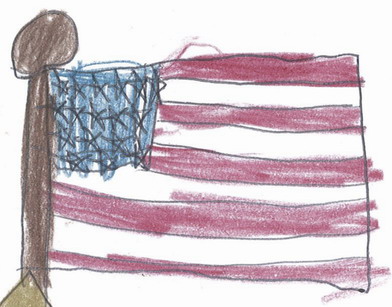This summer, CER is lucky enough to have five wonderful interns who hail from colleges across the nation. They had the opportunity to attend the 2013 National Charter Schools Conference since it was right in our own backyard.
Each share their reflections on the conference, CER’s legacy, and education reform and their intern experience thus far. We look forward to their Edspresso contributions during their remaining time at CER!
Tyler Losey:
The charter school movement has very strong enemies. First, there is the mass of unions, bureaucrats, and politicians working every day against reform. There is ignorance about what exactly charter schools are, which is an enemy as well. At times it might seem like the proponents of charter schools have no chance of success — that we are up against a lot. At the National Charter School Conference there was a sign, however, that our movement is as equally strong as our enemies…
read Tyler Losey’s post here
Macon Richardson:
Commuters flooded in and out of Tenleytown station, ready to face a typical DC, muggy Monday morning. For me, however, the morning was decidedly atypical. Instead of hopping on the red line to CER’s Bethesda office, I took the train the opposite direction. I headed downtown to DC’s convention center for the National Alliance of Public Charter Schools Conference. At the convention center, my fellow interns and I had a single task…
read Macon Richardson’s post here
Austin White:
As I walked through the doors of the Charter School Conference wheeling suitcases full of CER’s tote bags, I watched the subtle expression of confusion emerge on the toughened face of the security guard ahead of me. I tried to appear confident, but insecurely felt that my ambivalence was radiating…
read Austin White’s post here
Annie Bennett:
After representing CER at the National Charter School Conference this week, one thing was evident — sometimes you can learn a lot from the sidelines. This year’s conference was located here in D.C., which meant it was a great opportunity to spread information and publications about what CER stands for and the impact the organization is having throughout the country. Even without stepping foot in a break-out session or listening to the impressive line-up of speakers…
read Annie Bennett’s post here
Callie Wendell:
The variety of people and the multitude of locations from which they came from is extremely symbolic of the charter school movement. Charter schools don’t just affect a certain group of people; they touch the lives of a plethora of people across the country…
read Callie Wendell’s post here











The Birthplace of Freedom
We say it over and over again, see it in writing, hear it in the words of politicians and patriots, read it in the tens of thousands of documents that make up our libraries, and are spread down through the electronic world.
It means a lot to most of us, despite maybe not appreciating fully the depth of the statement that the US is “The Birthplace of Freedom.”
I owe several great professors in college a debt for teaching me what it means in a way that I’d never really fully understood. While I had every reason to understand, being the daughter of a very proud “new” American who had come over on the boat from Italy, it turns out I knew very little about the purpose and struggle that really ensued back in the 1700s when the people who came to America to claim property for their King soon recognized that a new culture of life was possible by starting from scratch.
In his book “America the Beautiful“, Dr. Ben Carson writes of this struggle and how those who dare to challenge the kind of governmental intrusion that the first patriots fought are dismissed as radical or fringe. It turns out he says, that the criticism of people who push back on conventional politicians these days sounds a lot like what the how the British elite considered our nation’s founders, too.
“In the days of the old Tea Party, the British government and American Loyalists attempted to establish and maintain control of the colonies. When the Patriots first began to resist such efforts, those in power tended to deny that there was any real resistance from anyone except extremist, fringe individuals… Unfortunately for those in control, ignoring the movement did nothing to lesson its intensity and, in fact, gave it time to grow even more powerful. “
The agitators of the 1770s are like the grassroots of today. Thomas Paine was not extraordinary; he was actually a self-described failure. But in his new start in America, he went on to give a voice to extraordinary thoughts and distributed Common Sense to nearly a third of all people living in the colonies, and it accelerated the thirst for independence. Such “radicals” today are calling for the right to other freedoms – like in education – and are dismissed as fringe, or anti-American, like their forefathers were dismissed as anti-British.
By reading the works of and about those dead, white men emerges a theme that continues through today, especially among people of color, who are represented in education reform circles by such notable and accomplished leaders as DC’s Kent Amos, Milwaukee’s Howard Fuller and Louisiana’s Ken Campbell to name but a few (a comprehensive list would produce thousands). They demand power and freedom for communities that are historically oppressed and currently the most hurt by bad schools. They demand freedom for families from oppressive educational environments and challenge the status quo and the government rules that consequently give life to mediocrity and failed policies. Recently the NEA’s leadership led their annual conventional attendees to “Raise your hand if you’re tired of others thinking they know what’s best for our students. It is time to reclaim our profession, our schools, and public education,” declared Pringle. “It is time, NEA, to storm the castle.” “Our students” suggests that they, not parents, are in charge of the kids. Such unions work hard to keep the agitators out of their business and to convince others that empowering parents with the freedom in education to determine the best education for their child is an un-American ideal. Yet our reform agitators persist.
Like our founding fathers, there are some reformers today in education who are more interested in getting along with the proverbial “King”. They lead discussions about compromise and upon receiving promises from the authorities that they will respect what we do, they give great license to governments to involve themselves in parent and education affairs even as they are voicing support for dismantling such government controls. It reminds me of the namesake of my alma mater, John Dickinson, who was one of the last hold outs to sign the Declaration of Independence, more concerned that by upsetting the King there would be no future for America. “He hoped that an appeal to reason might remind the King of that contractual obligation to his American subjects and thereby restore good relations. Only when King George publicly sided with his ministers and ordered a Royal army to New York did Dickinson consider the social contract dissolved. Although he refused to sign the Declaration, Dickinson was among the first to don uniform to defend the new nation.”
It sounds all too familiar to what we see today. When those who work to advance freedom for parents in by enacting strong charter school laws, opportunity scholarships, teacher performance laws and clear measurement and evaluation, they are often met by resistance or calls for acquiescence by members of their own “flock” who want us to appeal to the reason of our opponents, or government officials who have a vested interest in the status quo.
It’s time for a history lesson. We must delve deeply into our nation’s founding and read intensively the documents that help us understand our rich foundation of agitation and revolution, that which is done in the name of principal and about which freedom is the central theme. Perhaps had my high school imparted such detailed instruction, I and my fellow students and the educators who taught us along the way might not be among the majority who turn a blind eye to the cause of educational freedom for parents. Imagine if all schools instilled in our students a deep and abiding knowledge of the Birthplace of Freedom! The results would likely be extraordinary, starting with an increase in the kind of paltry knowledge our students demonstrate in history with each national assessment. They might also not just have knowledge but demonstrate its use in public policy battles, resulting in laws that respect the fights we once waged for this freedom. And it might also make people recognize that agitators and revolutionaries for freedom today are not the fringe but the very fabric of our democracy.
On this Fourth of July, 2013, 237 years after our founding, let’s restore the language and learning around our Birthplace of Freedom, to the benefit of today’s children; tomorrow’s leaders.